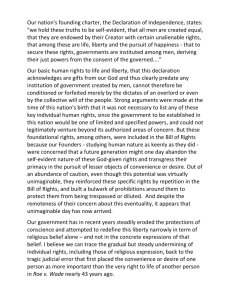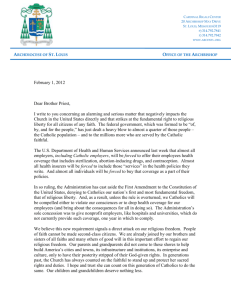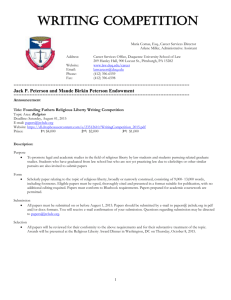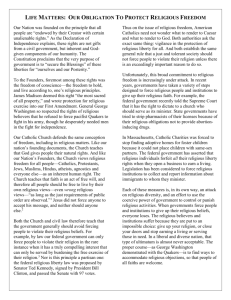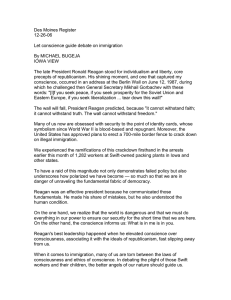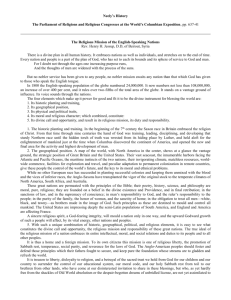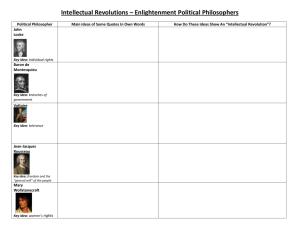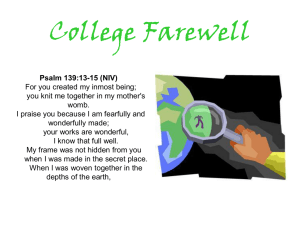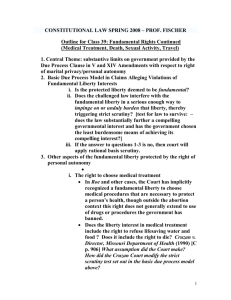Declaration on Religious Liberty (Dignitatis Humanae)
advertisement
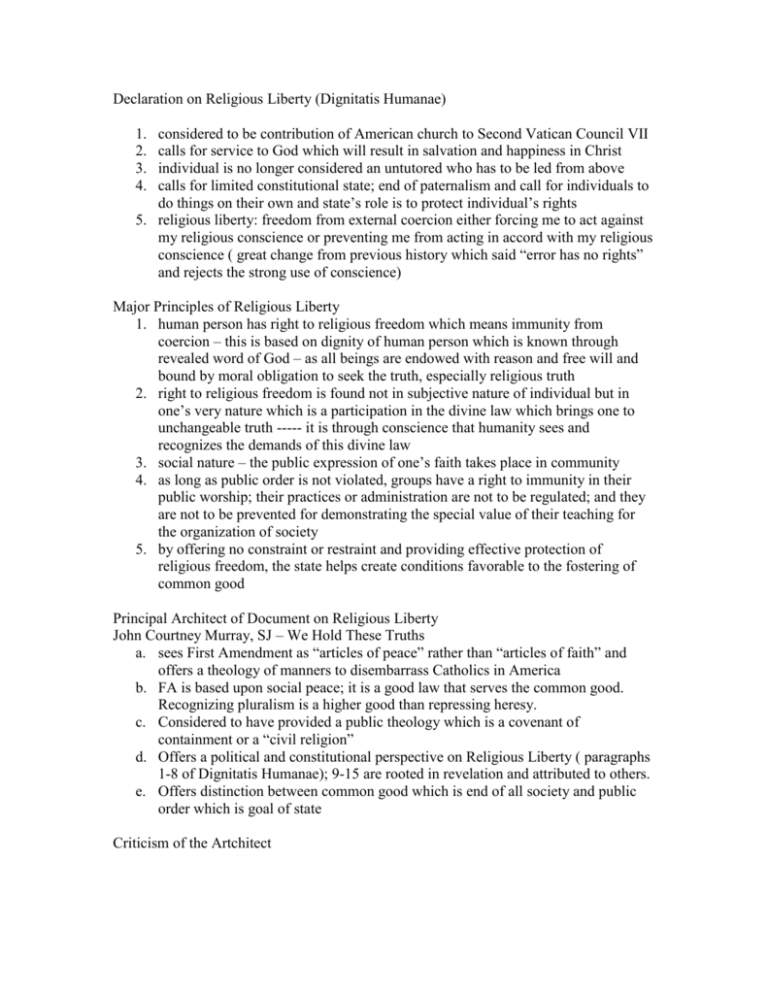
Declaration on Religious Liberty (Dignitatis Humanae) 1. 2. 3. 4. considered to be contribution of American church to Second Vatican Council VII calls for service to God which will result in salvation and happiness in Christ individual is no longer considered an untutored who has to be led from above calls for limited constitutional state; end of paternalism and call for individuals to do things on their own and state’s role is to protect individual’s rights 5. religious liberty: freedom from external coercion either forcing me to act against my religious conscience or preventing me from acting in accord with my religious conscience ( great change from previous history which said “error has no rights” and rejects the strong use of conscience) Major Principles of Religious Liberty 1. human person has right to religious freedom which means immunity from coercion – this is based on dignity of human person which is known through revealed word of God – as all beings are endowed with reason and free will and bound by moral obligation to seek the truth, especially religious truth 2. right to religious freedom is found not in subjective nature of individual but in one’s very nature which is a participation in the divine law which brings one to unchangeable truth ----- it is through conscience that humanity sees and recognizes the demands of this divine law 3. social nature – the public expression of one’s faith takes place in community 4. as long as public order is not violated, groups have a right to immunity in their public worship; their practices or administration are not to be regulated; and they are not to be prevented for demonstrating the special value of their teaching for the organization of society 5. by offering no constraint or restraint and providing effective protection of religious freedom, the state helps create conditions favorable to the fostering of common good Principal Architect of Document on Religious Liberty John Courtney Murray, SJ – We Hold These Truths a. sees First Amendment as “articles of peace” rather than “articles of faith” and offers a theology of manners to disembarrass Catholics in America b. FA is based upon social peace; it is a good law that serves the common good. Recognizing pluralism is a higher good than repressing heresy. c. Considered to have provided a public theology which is a covenant of containment or a “civil religion” d. Offers a political and constitutional perspective on Religious Liberty ( paragraphs 1-8 of Dignitatis Humanae); 9-15 are rooted in revelation and attributed to others. e. Offers distinction between common good which is end of all society and public order which is goal of state Criticism of the Artchitect

